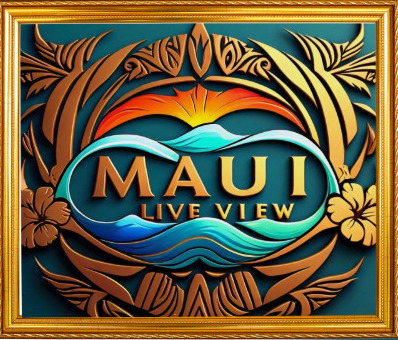Introduction: The Jewel of Maui's West Coast
Kaanapali Beach, Maui Webcams. Nestled along the sun-kissed shores of Maui's west coast lies Ka'anapali Beach, a pristine stretch of golden sand and azure waters that has captivated visitors for centuries. Renowned for its natural beauty, world-class resorts, and vibrant atmosphere, Ka'anapali Beach has earned a reputation as one of Hawaii's premier beach destinations, attracting travelers from across the globe in search of relaxation, adventure, and unforgettable experiences.
Ancient Origins: Hawaiian Settlement and Cultural Heritage
Long before the arrival of European explorers and settlers, Ka'anapali was inhabited by Native Hawaiians who recognized its natural beauty and abundant resources. The area was home to fishing villages, taro fields, and sacred sites, where Hawaiians conducted rituals, ceremonies, and cultural practices passed down through generations.
Ka'anapali's name, which translates to "rolling cliffs" in Hawaiian, reflects the rugged coastline and dramatic landscape that has shaped the region's identity for centuries. For the Native Hawaiians, Ka'anapali was more than just a beach—it was a sacred place of spiritual significance, where they sought solace, connection, and communion with the land and sea.
European Exploration and Contact: Arrival of Western Explorers
The first recorded European contact with Ka'anapali occurred in the late 18th century when British explorer Captain James Cook sailed past the shores of Maui during his voyages of exploration in the Pacific. Cook's accounts of the island's lush landscapes and pristine beaches sparked interest among European traders, missionaries, and adventurers, who began to visit the Hawaiian Islands in increasing numbers.
In the early 19th century, Ka'anapali became a regular stop for whaling ships and merchant vessels plying the waters of the Pacific. These ships brought goods, supplies, and new technologies to the islands, transforming the way of life for the Native Hawaiians and laying the groundwork for future economic development and cultural exchange.
Plantation Era: Sugar, Pineapple, and Economic Expansion
The late 19th and early 20th centuries saw the rise of the sugar and pineapple industries in Hawaii, ushering in a period of economic expansion and industrialization that would shape the future of Ka'anapali and the surrounding region. Plantation owners and entrepreneurs began to acquire land along the coast, clearing forests and cultivating fields for sugar cane and pineapple production.
The development of sugar and pineapple plantations brought an influx of immigrant laborers to Hawaii, including workers from China, Japan, Portugal, and the Philippines. These diverse communities contributed to the cultural tapestry of Ka'anapali, bringing their traditions, languages, and culinary customs to the island and enriching its vibrant multicultural heritage.
Tourism Boom: Rise of Ka'anapali as a Resort Destination
The transformation of Ka'anapali into a world-class resort destination began in the mid-20th century, fueled by the post-World War II tourism boom and the advent of commercial air travel. Visionary developers recognized the potential of Ka'anapali's pristine beaches and idyllic setting, and began to acquire land and plan ambitious resort projects along the coastline.
In 1962, the opening of the Sheraton Maui Resort & Spa marked the beginning of Ka'anapali's evolution into a premier vacation destination. The resort's luxurious accommodations, upscale amenities, and stunning oceanfront location set a new standard for hospitality in Hawaii, attracting affluent travelers from around the world.
Environmental Conservation: Protecting Ka'anapali's Natural Beauty
As tourism grew and development accelerated in Ka'anapali, concerns arose about the impact of human activity on the fragile coastal ecosystem. Environmentalists and community activists rallied to protect Ka'anapali's natural beauty and cultural heritage, advocating for the preservation of beaches, reefs, and wildlife habitats.
In 1980, Ka'anapali Beach was designated as a "Blue Wave Beach" by the Clean Beaches Council, recognizing its commitment to environmental stewardship and water quality management. The designation helped to raise awareness about the importance of sustainable tourism and responsible development in Ka'anapali, inspiring other resorts and communities to follow suit.
Cultural Revitalization: Embracing Hawaiian Traditions and Values
In recent years, there has been a growing movement to celebrate and honor Hawaiian culture and traditions in Ka'anapali, as residents and visitors alike seek to connect with the island's rich heritage and spiritual roots. Cultural events, workshops, and festivals showcase traditional Hawaiian arts, music, dance, and cuisine, providing opportunities for cultural exchange and cross-cultural understanding.
Resorts and businesses in Ka'anapali have also embraced Hawaiian values of aloha (love), malama 'aina (care for the land), and kuleana (responsibility), integrating these principles into their operations and community outreach efforts. From cultural programs and educational tours to environmental initiatives and conservation projects, Ka'anapali is committed to preserving its natural and cultural heritage for future generations to enjoy.
Conclusion: A Legacy of Beauty, Hospitality, and Aloha
Ka'anapali Beach stands as a testament to the enduring allure of Maui's west coast, where natural beauty, cultural heritage, and modern amenities converge to create an unforgettable vacation experience. From its ancient origins as a sacred site to its modern incarnation as a world-class resort destination, Ka'anapali embodies the spirit of aloha and the timeless appeal of Hawaii's tropical paradise. As travelers continue to flock to its shores in search of sun, surf, and relaxation, Ka'anapali remains a beacon of beauty, hospitality, and aloha for all who visit.
